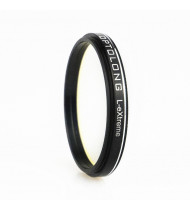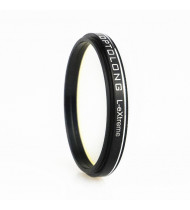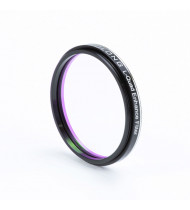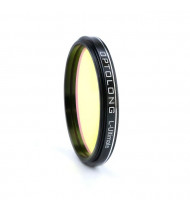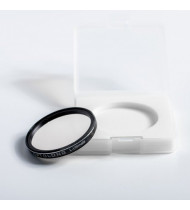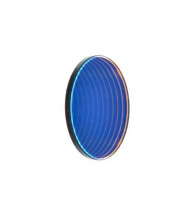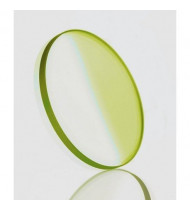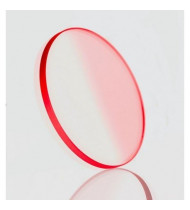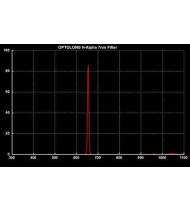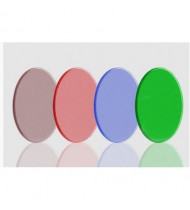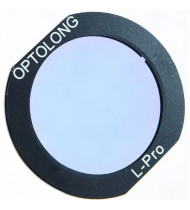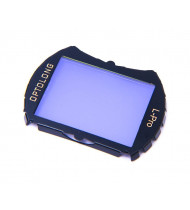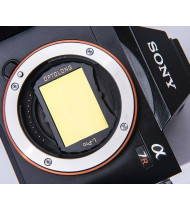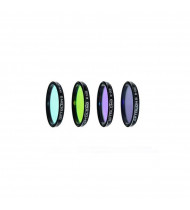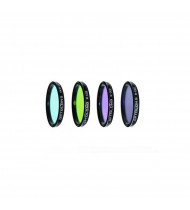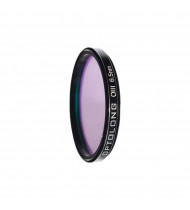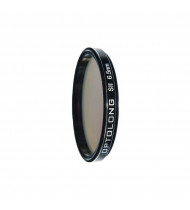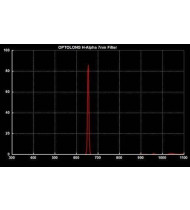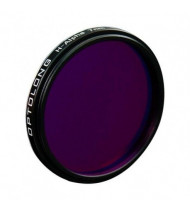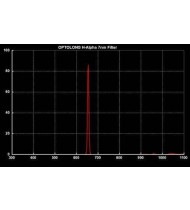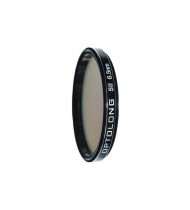Search results for 'gooper tablet extreme model 19 gp19 n a'
Optolong L-eXtreme Filter 1.25" (31.8mm)
US$ 202.03The advantage of the L-eXtreme filter is that there is no transmission between the H-beta and OIII lines, as there is no nebula emission lines there. In this case, it isn't letting light pollution come through so that maximize nebulas signal and make the sky background darker while imaging. The L-eXtreme filter should better isolate the emission lines only and better protect from light pollution.
Optolong L-eXtreme Filter 2" (50.8mm)
US$ 263.80The advantage of the L-eXtreme filter is that there is no transmission between the H-beta and OIII lines, as there is no nebula emission lines there. In this case, it isn't letting light pollution come through so that maximize nebulas signal and make the sky background darker while imaging. The L-eXtreme filter should better isolate the emission lines only and better protect from light pollution.
Optolong L-QEF L-Quad Enhance Filter 2"
US$ 210.86L-QEF eliminates light pollution caused by mercury and sodium lamps and produces a broadband image with minimal color cast. This filter is broadband and suppresses wavelengths of light pollution. It is great for star clusters, dark and reflection nebulae, as well as galaxies in skies affected by light pollution.Optolong L-Ultimate 2" Filter
US$ 343.20The L-Ultimate filter is a practical solution for all amateurs who want to use their telescope from urban and sub-urban areasOptolong SII Filter 6.5nm 36mm
US$ 154.39Extra narrowband SII-CCD 6.5nm filter (Sulful II for CCD) is designed for nebula observation allowing 6.5nm bandwidth of light centered on a wavelength of 672nm through, and reducing the transmission of certain wavelengths of light, specifically those produced by artificial light including mercury vapor, and both high and low pressure sodium vapor lights and the unwanted natural light caused by neutral oxygen emission in our atmosphere (i.e. skyglow).
Optolong OIII Filter 6,5nm 36mm
US$ 154.39Extra Narrowband OIII-CCD 6.5nm filter is designed for nebula observation allowing 6.5nm bandwidth of light centered on a wavelength of 500nm through, which corresponds to OIII emission lines, and reducing the transmission of certain wavelengths of light, specifically those produced by artificial light including mercury vapor, and both high and low pressure sodium vapor lights and the unwanted natural light caused by neutral oxygen emission in our atmosphere (i.e. skyglow).
Optolong H-Alpha 7nm 36mm
US$ 154.39The H-ALPHA 7nm filter is the most popular narrow-band filter that allows a 7nm bandwidth centered on a 656nm wavelength.
Optolong Kit LRGB 36mm
US$ 237.33The LRGB filter kit is designed for maximum contrast and with extremely high gradients for a clear differentiation of light colors
- The L-Pro CCD filter improves the contrast of deep-sky objects and reduces the sky background.
Optolong L-eNhance Canon EOS Clip Filter
US$ 184.39EOS Clip version of the famous L-eNhance filter by Optolong
Optolong L-eNhance is a dual-band pass filter which has been designed for DSLR (digital SLR), color CMOS and monochrome CCD cameras. The convenience and cost effectiveness of this filter allows amateurs to image a rich selection of astronomical images, even in bright, heavily light-polluted areas. It effectively isolates the H-Alpha, H-Beta, and Oxygen III nebula emission lines and achieves a maximum transmission of up to 90%. The performance of this filter delivers superb images.- The L-Pro CCD filter improves the contrast of deep-sky objects and reduces the sky background.
Optolong Kit L-RGB 2" (50.8mm)
US$ 290.26The LRGB filter kit is designed for maximum contrast and with extremely high gradients for a clear differentiation of light colors
Optolong Kit L-RGB 1,25" (31.8mm)
US$ 189.68The LRGB filter kit is designed for maximum contrast and with extremely high gradients for a clear differentiation of light colors
Optolong OIII Filter 6,5nm 1.25" (31.8mm)
US$ 131.46Extra Narrowband OIII-CCD 6.5nm filter is designed for nebula observation allowing 6.5nm bandwidth of light centered on a wavelength of 500nm through, which corresponds to OIII emission lines, and reducing the transmission of certain wavelengths of light, specifically those produced by artificial light including mercury vapor, and both high and low pressure sodium vapor lights and the unwanted natural light caused by neutral oxygen emission in our atmosphere (i.e. skyglow).
Optolong SII Filter 6.5nm 1.25" (31.8mm)
US$ 149.10Extra narrowband SII-CCD 6.5nm filter (Sulful II for CCD) is designed for nebula observation allowing 6.5nm bandwidth of light centered on a wavelength of 672nm through, and reducing the transmission of certain wavelengths of light, specifically those produced by artificial light including mercury vapor, and both high and low pressure sodium vapor lights and the unwanted natural light caused by neutral oxygen emission in our atmosphere (i.e. skyglow).
Optolong H-Alpha 7nm 1.25" (31.8mm) v.2
US$ 136.75Bester H-alpha-Linienfilter für die Astrofotografie von Emissionsnebeln mit höchstem Kontrast und der Wiedergabe zartester Nebeldetails.
♦ schmalbandiger (<=7 nm) Linienfilter für wichtige Nebellinie
♦ bevorzugt für CDD-Kameras mit Full-Frame-Transfer-Technik
♦ 2 mm dick und somit homofokal mit vielen anderen Filtern von Optolong
♦ Interferenzfilter
♦ feinoptisch poliert
♦ mehrschichtig hartvergütet - reflexfrei und weitgehend kratzfestOptolong H-Alpha 7nm 2" (50.8mm) v.2
US$ 202.03The H-ALPHA 7nm filter is the most popular narrow-band filter that allows a 7nm bandwidth centered on a 656nm wavelength.
Optolong SII Filter 6.5nm 2" (50.8mm)
US$ 198.51Extra narrowband SII-CCD 6.5nm filter (Sulful II for CCD) is designed for nebula observation allowing 6.5nm bandwidth of light centered on a wavelength of 672nm through, and reducing the transmission of certain wavelengths of light, specifically those produced by artificial light including mercury vapor, and both high and low pressure sodium vapor lights and the unwanted natural light caused by neutral oxygen emission in our atmosphere (i.e. skyglow).


